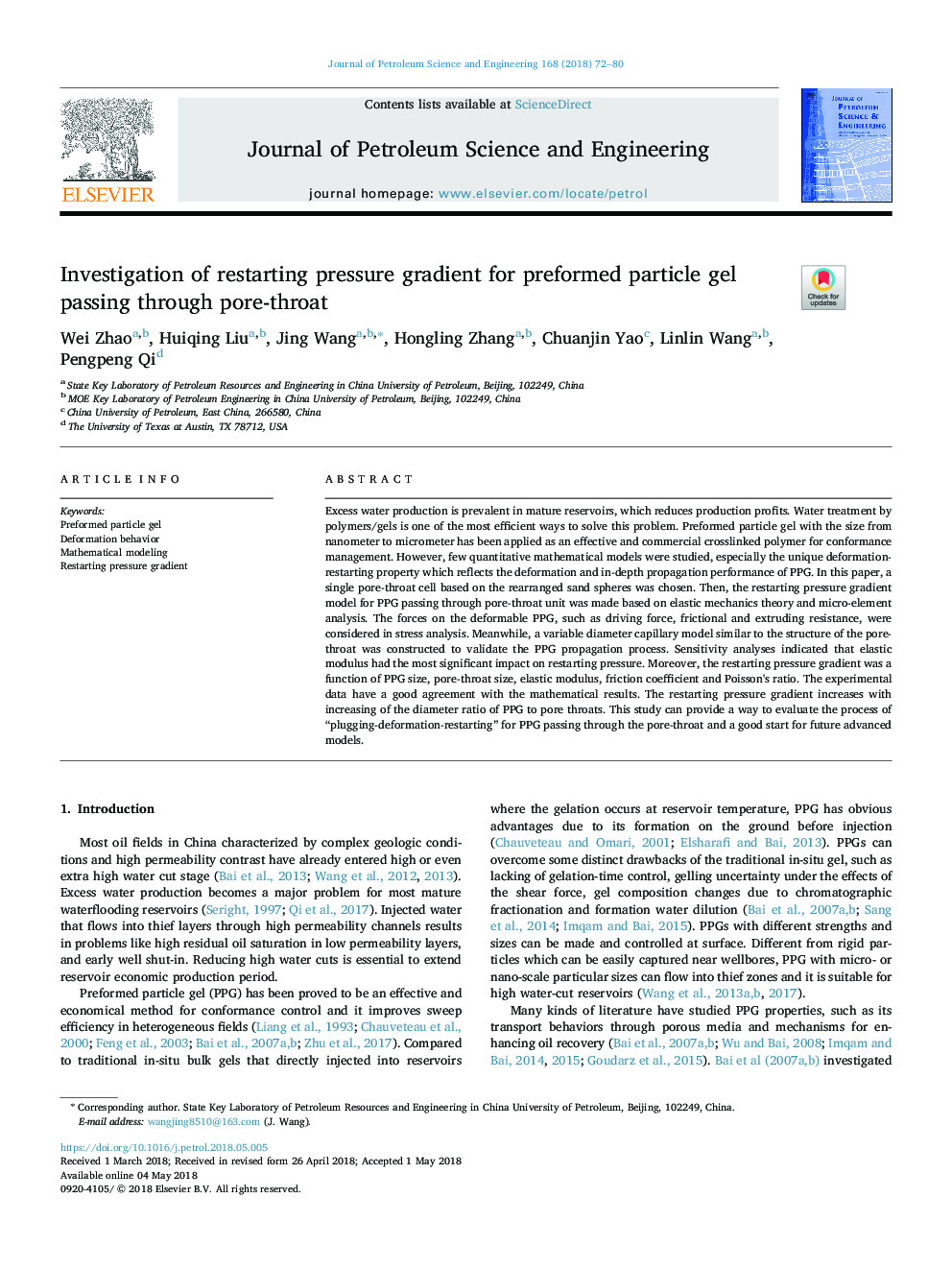| Article ID | Journal | Published Year | Pages | File Type |
|---|---|---|---|---|
| 8124670 | Journal of Petroleum Science and Engineering | 2018 | 9 Pages |
Abstract
Excess water production is prevalent in mature reservoirs, which reduces production profits. Water treatment by polymers/gels is one of the most efficient ways to solve this problem. Preformed particle gel with the size from nanometer to micrometer has been applied as an effective and commercial crosslinked polymer for conformance management. However, few quantitative mathematical models were studied, especially the unique deformation-restarting property which reflects the deformation and in-depth propagation performance of PPG. In this paper, a single pore-throat cell based on the rearranged sand spheres was chosen. Then, the restarting pressure gradient model for PPG passing through pore-throat unit was made based on elastic mechanics theory and micro-element analysis. The forces on the deformable PPG, such as driving force, frictional and extruding resistance, were considered in stress analysis. Meanwhile, a variable diameter capillary model similar to the structure of the pore-throat was constructed to validate the PPG propagation process. Sensitivity analyses indicated that elastic modulus had the most significant impact on restarting pressure. Moreover, the restarting pressure gradient was a function of PPG size, pore-throat size, elastic modulus, friction coefficient and Poisson's ratio. The experimental data have a good agreement with the mathematical results. The restarting pressure gradient increases with increasing of the diameter ratio of PPG to pore throats. This study can provide a way to evaluate the process of “plugging-deformation-restarting” for PPG passing through the pore-throat and a good start for future advanced models.
Related Topics
Physical Sciences and Engineering
Earth and Planetary Sciences
Economic Geology
Authors
Wei Zhao, Huiqing Liu, Jing Wang, Hongling Zhang, Chuanjin Yao, Linlin Wang, Pengpeng Qi,
